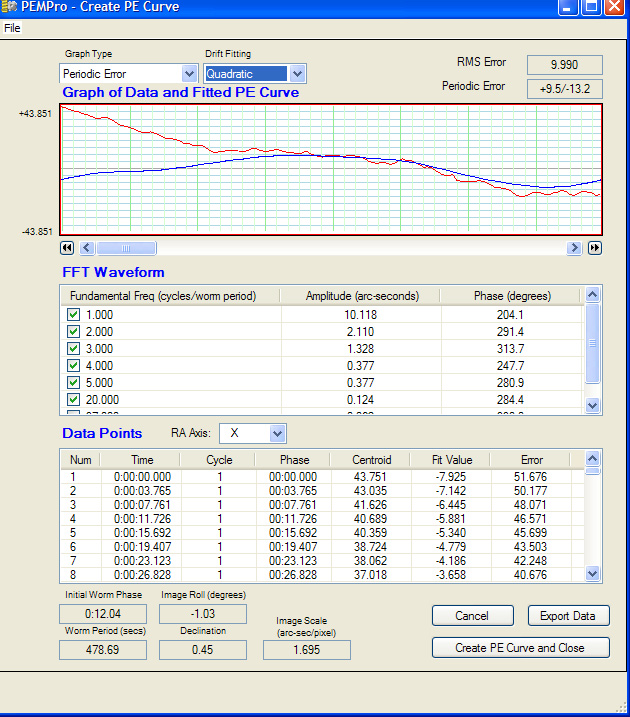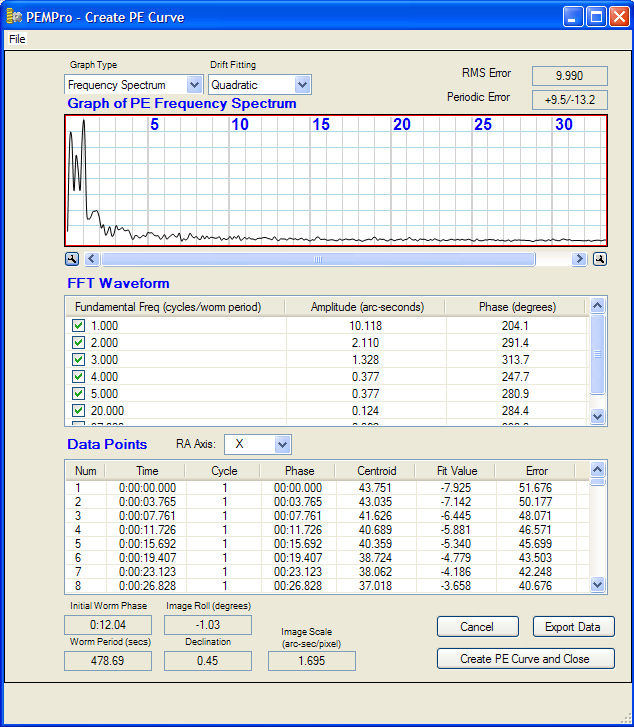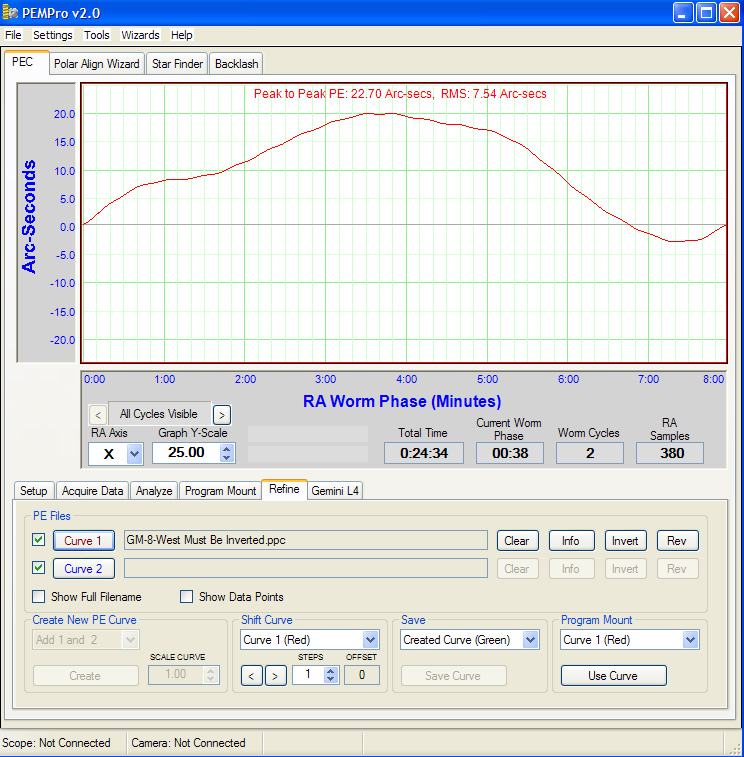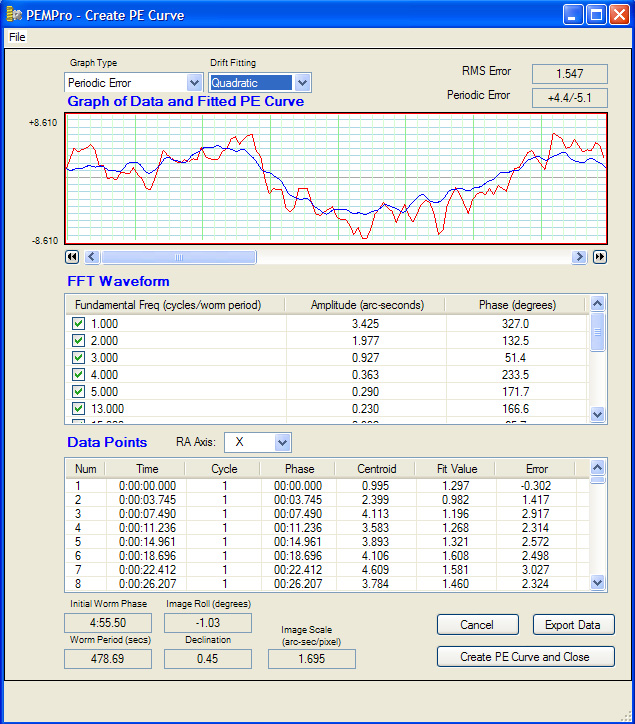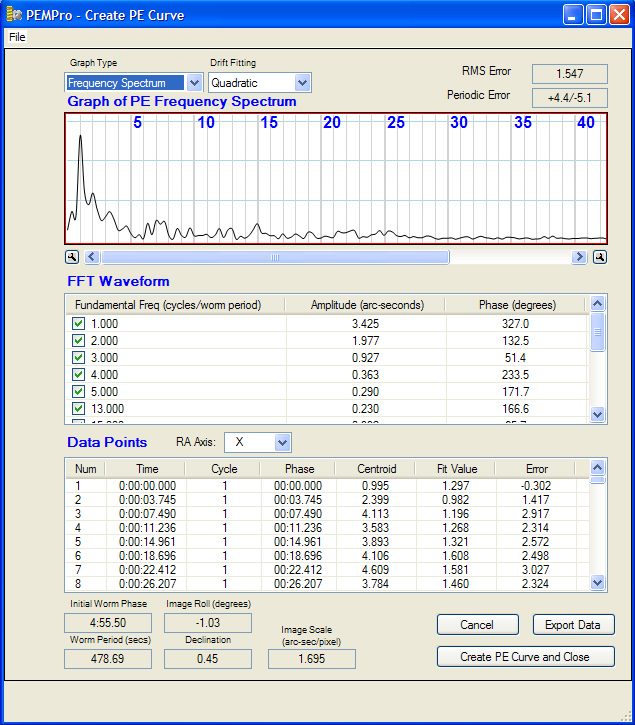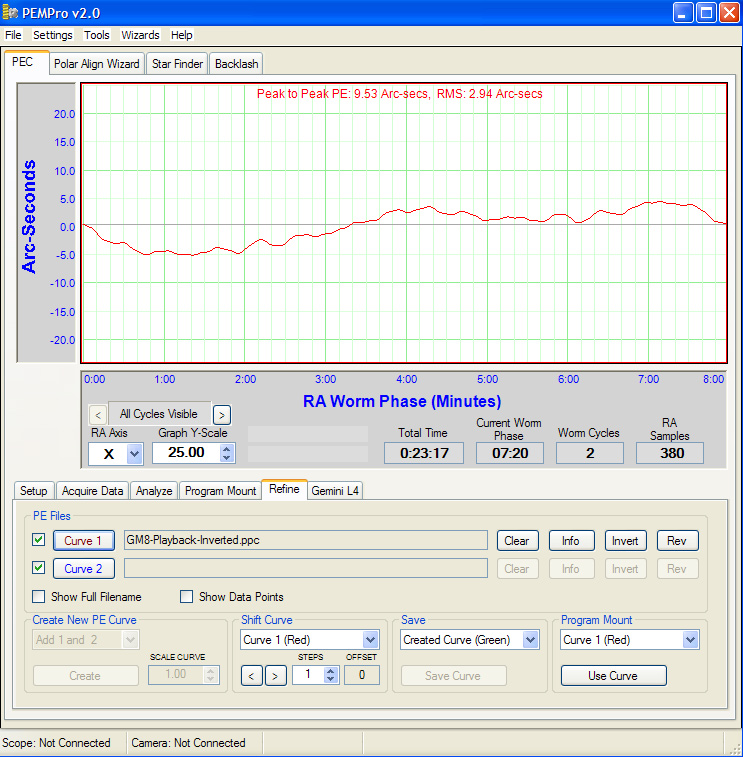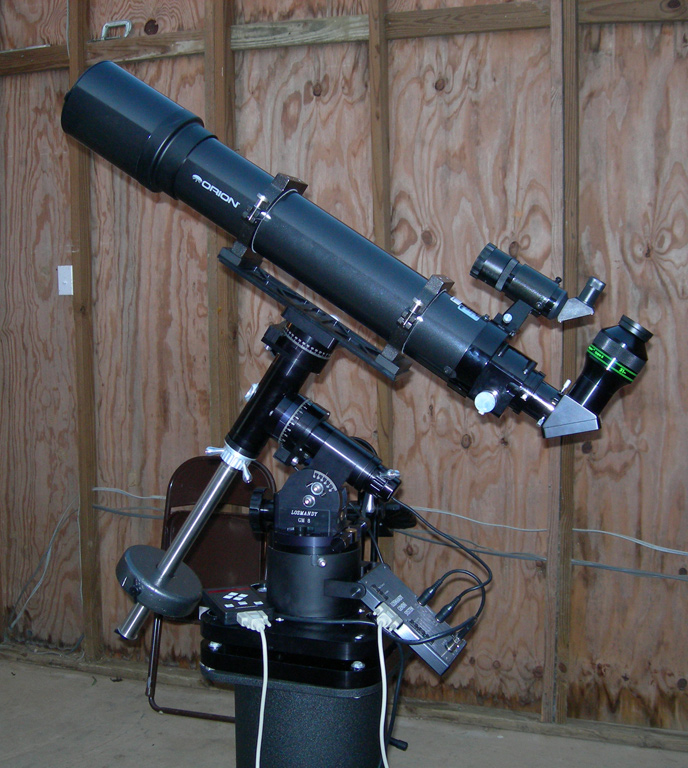
Star Test Video (the star Vega was used for the test, very near
zenith position):
The webcam of the star test showed nice, evenly spaced and symmetrical
diffraction rings both in and out of focus. The video is a little
darker than the visual display while I was imaging it, but visually the
star test did very well. The out-of-focus spherochromaticism is
plainly visible in the star test. But the important point about the
SA is that it is well controlled when the scope is *at focus*, and
produces a nice, crisp focus. The chromatic aberration is also very low
when at focus.
NOTE: You will need DIVX to be able to see this video. Download the free DIVX player HERE.
SUMMARY:
Overall, the telescope does very well optically for its price
range. The SA and CA levels are well above what you find in premium
apochromatic refractors that use the most expensive triplet lens cells and
premium glass, but are at excellent levels for this type of doublet ED
lens design, and also for the price range the scope is offered at (I used my TMB 152 triplet apo refractor for making comparisons). But these premium models also cost 3-5 times more than
the Orion 120ED. For the money, the Orion 120ED gives very pleasing
views visually, with minimal SA and CA. For imaging use, mine does a
good job and produces nice, crisp focus through the CCD camera. Since
I have not evaluated any cameras beyond 1600 x1 1200 pixel resolution or
required image circle larger than 15mm on
this scope, I do not have first-hand evidence of what the vignetting or flat field issues of the
Orion 120ED would be beyond this resolution (if any).
The Moonlite CFL 2.5 inch motorized focuser upgrade is an outstanding addition to the Orion 120ED, and makes the telescope much more useable for imaging purposes. I highly recommend it for serious imagers, especially due to Moonlite's willingness to custom-fit the mounting flange for precise fit to your specific OTA, and also for their varied line of accessories and adapters to enhance function of the basic focuser. For serious visual observing by those not interested in imaging, the CFL with dual 8:1 microfocus knob and friction brake is an outstanding upgrade instead of the motorized version, and will make precise micro-focusing of the telescope possible.
USAGE RECOMMENDATIONS:
1) Wide field imaging using large-format DSLR cameras and large-format CCD
cameras: *NOT* evaluated, so any potential
vignetting or flat-field issues at higher resolution are unknown by me.
You should first evaluate the size of image circle required to fully
illuminate your own camera's CCD chip, then keep in mind the 27mm image
circle capability reference provided to me by Orion Tech Support, in order
to determine any potential vignetting issues with your camera. Also,
if you plan to use a focal reducer, this could lead to worsening of any
vignetting that might be occurring with your camera.
2) Standard CCD imaging with medium format CCD cameras: RECOMMENDED.
I saw no vignetting or flat-field problems at the maximum 1600 x 1200
pixel resolution and required 15mm image circle of my SBIG ST-2000XM camera.
3) Visual use: HIGHLY
RECOMMENDED. An excellent scope for visual use for the
money. Nice, crisp views and excellent color correction for this
price range, with no
edge-of-FOV problems noted during my testing, when using Televue eyepieces
and star diagonal.
OTHER:
Keep in mind these are mass-produced scopes and there may be some slight
variability in optical performance from unit to unit. You should
thoroughly star test your own scope *BEFORE* spending the money on any
aftermarket focusers and taking a chance on voiding any possibility of a
return or replacement of your scope, just in case yours does prove to have
bad optics.
CCDWare Test Results of Various Brands of Telescopes (Note: you may need to join the CCDWare group support forum and be logged in there to be able to review these results (it's free to join).
Note: The CCD Inspector results are affected by camera
flex and collimation. My Orion 120ED does have some camera flexure
present due to using a very heavy camera setup with clamping rings instead
of rigid screw-down attachment to the drawtube. Also, upon testing
the scope's collimation with a Takahashi collimator, it was found the
objective lens cell is slightly out of collimation. So fixing these
problems would result in even better analysis numbers than what I got for
this scope. The numbers as they are, stack up very favorably as you
will see when looking at other types of telescope designs and brands, and
the results they gave on these same tests. Also keep in mind though,
that these results were measured based on the inner 50% of the optical
path with the type of camera that I used (utilized the inner 60% only of
the light path of the scope). You can most likely expect a higher
field curvature results on these tests if performing them on a
large-format CCD or DSLR camera that pushes the utilized portion of the
scope's light path out to its maximum capacity. Since I had no way
to evaluate this, I do not know how much worse any potential field
curvature numbers might be on a large-format CCD chip.
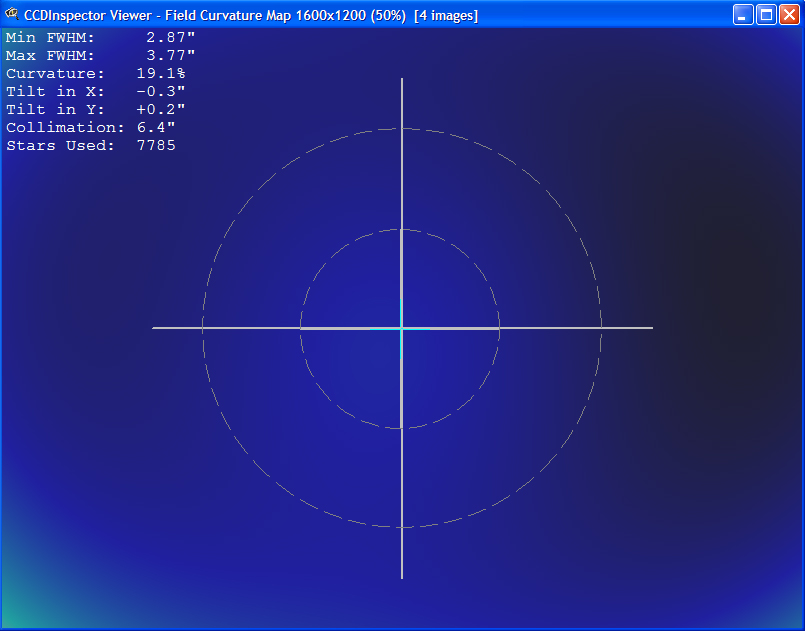
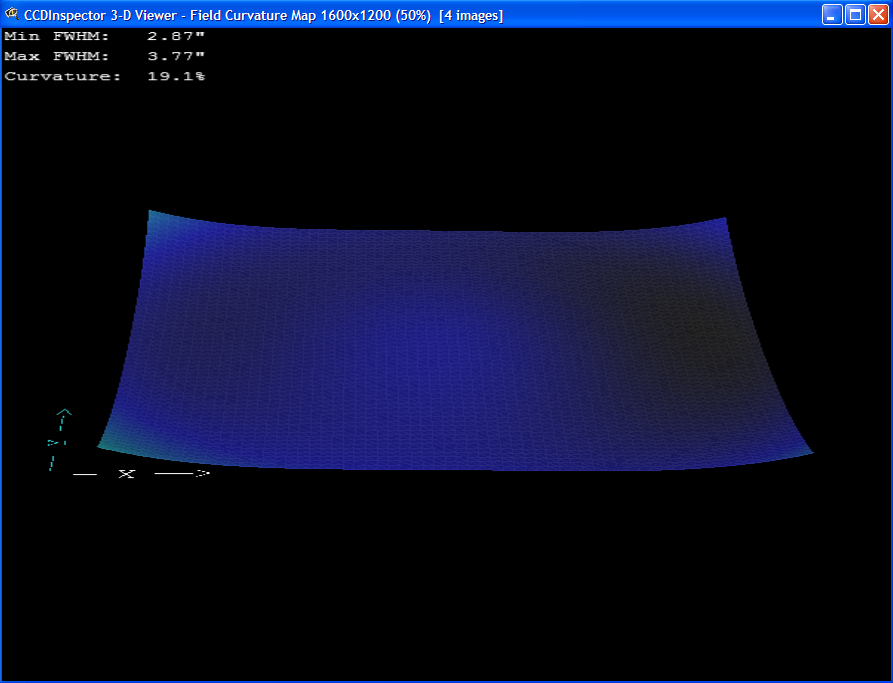
>>>>END OF ORION 120ED AND MOONLITE CFL FOCUSER SECTION<<<<
>>>>SEE BELOW FOR LOSMANDY GM-8 GOTO MOUNT ANALYSIS<<<<
M11 open cluster and surrounding star field
This image has some issues due to tracking problems with the GM-8 mount that have since been resolved, but still shows that the Orion 120ED is capable of doing some very nice imaging with a good camera, good processing, and stable mount.
Wide field image of M71, taken after tearing down, cleaning, and re-lubing the GM-8's RA axis. The improvement in autoguiding shows. (Note, for both the above test images, adaptive optics were used, which typically cuts the mount's total guide error in half). You may not get quite as good of results without adaptive optics, although the guide errors should still be at an acceptable level if shooting at 2 arc-seconds per pixel or above.
